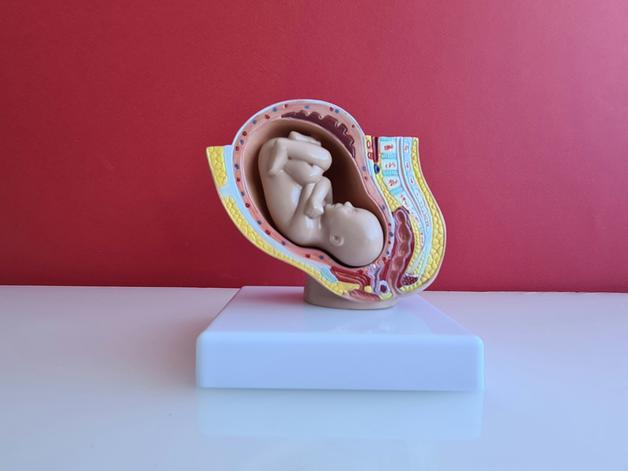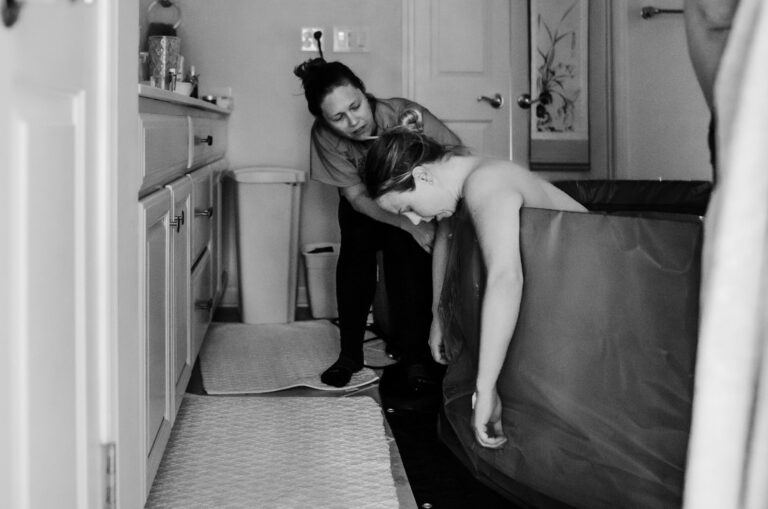Welcoming a new child rarely resembles a tranquil stroll in a sunlit park. For many parents, the concept of birth preparation techniques feels both ambiguous and loaded with expectation—should you master breathing, study labor positions, memorize every hospital protocol? The uncertainty can give rise to sleepless nights, swirling doubts, and a cascade of advice from well-meaning friends and relentless online forums. Your mind churns: Will you cope with the pain, advocate for your choices, adapt if the birth unfolds differently than imagined? Medical science, tradition, and individual experience all play their part in shaping today’s toolkit of birth preparation techniques. And amid this, perhaps, you’re seeking clarity—science-backed information, reassurance, and practical tools—without judgment, guilt, or perfection demanded. What if knowledge and small daily habits could offer a sense of agency?
Here, you’ll find not only an exploration of the physical and mental aspects that underpin labor but also an immersion into support systems, nutritional strategies, and the subtle power found in preparation. Whether your priorities lean toward pain management, emotional resilience, or simply wanting to understand how to foster the healthiest possible environment for your baby and yourself, there’s room for every approach.
Understanding birth preparation techniques: origins, evolution, and why they matter
You might wonder, why invest time in birth preparation techniques—aren’t birth instincts enough? While our bodies carry an astounding wisdom, modern research shows that targeted education and physical training substantially influence birth outcomes. Techniques range from classic breathing exercises, which can physically dampen the stress response and support uterine contractions, to partner-based approaches that fortify emotional bonds and co-regulation during labor.
Historically, childbirth unfolded surrounded by community and hands-on practices, midwives guiding with intuition and experience. The advent of hospital birth immersed parents in sterile, highly monitored environments, shifting the focus—sometimes abruptly—toward intervention. Out of this tension, tailored birth preparation emerged: Lamaze with its rhythmic breathing, the Bradley Method highlighting partner coaching, and a tapestry of practices blending science, tradition, and holistic care (think prenatal yoga, doula care, mindful visualization). This landscape now offers expectant families an adaptive, evidence-based menu from which to draw.
The benefits: beyond the delivery room
Can mastering birth preparation techniques truly change the experience? Absolutely—and not only for birthing parents. Systematic reviews indicate that parents who prepare with education, mindfulness, and physical conditioning report reduced anxiety, greater birth satisfaction, and often a swifter postpartum recovery. Practical routines, like Kegel exercises and mindful stretching, pave the way for improved pelvic floor health and a more adaptable birth process. Meanwhile, mental strategies—regular affirmations, guided meditation, and peer support—build a psychological foundation, supporting both maternal and partner mental health.
Consider the ripple effect: when partners engage, communication deepens; when families share in learning, the circle of support widens. A well-prepared team is more likely to advocate, adapt, and thrive—whatever path birth takes.
A closer look: the many facets of birth preparation techniques
Relaxation and mind-body methods
- Sophrology: This method integrates controlled breathing, gentle movement, and guided visualization to lessen anxiety, tune into the body’s rhythms, and build resilience for the unpredictability of labor. The repetitive nature of sophrology encourages the autonomic nervous system to shift into a calmer, more adaptive state.
- Hypnosis and hypnobirthing: Harnessing the power of deep, trance-like relaxation, these approaches reduce perceived pain, ease physical symptoms such as nausea, and decrease fear by shifting the brain’s focus. With repetitive practice, the mind becomes conditioned to respond to sensation with relaxation rather than panic—a physiological phenomenon supported by neuroendocrine research.
- Prenatal singing and vocalization: Sound waves vibrate through tissue, promoting relaxation and increasing oxygenation. These vocal techniques may offer an analgesic effect by activating the parasympathetic nervous system, enhancing a sense of connection between mother and baby, and encouraging optimal fetal positioning.
Physical touch, movement, and therapeutic exercise
- Haptonomy: Focused touch and guided movements facilitate early parent-baby interaction and deepen emotional attachment. Though not primarily a pain-relief strategy, some haptonomic techniques can alleviate tension or discomfort during contractions.
- Prenatal yoga: Here is a harmony of movement, breathwork, and focused awareness. Medical literature supports its role in improving flexibility, posture, and pelvic alignment—factors directly associated with smoother labor progression and fewer interventions.
- Pilates: This discipline cultivates deep postural support and pelvic floor strength, potentially reducing incontinence risk and optimizing pushing effectiveness once labor advances.
- Essential exercises: From Kegels—tiny, repetitive contractions that guard against postpartum prolapse—to squats and pelvic tilts, these targeted moves not only foster endurance and alignment but also encourage baby to assume the best possible position for birth. Activities like water exercises (aquatic therapy, gentle swimming) relieve joint strain and swelling, providing a safe workout even into late pregnancy.
- Osteopathy: Employing gentle manual manipulations, osteopaths can address chronic musculoskeletal pain—a frequent pregnancy companion—helping to restore mobility and prepare the body’s alignment for labor.
- Shiatsu, reflexology, and massage: These hands-on therapies, when supported by clinical studies, reveal measurable reductions in maternal stress levels and pain perception. Whether administered by a professional or a loved one, therapeutic touch enhances the release of endorphins, the body’s natural painkillers.
Education, empowerment, and real-world support
- Childbirth classes: Topics vary widely, from the mechanics of labor—stages, timing, warning signs—to interventions (epidural, forceps, emergency cesarean). Comprehensive programs demystify hospital protocols and bridge the knowledge gap on topics like postpartum recovery and newborn feeding. Evidence-based classes also enhance parental confidence, equipping families to make informed choices under pressure.
- Family involvement: The presence of involved partners, trained doulas, or trusted friends provides a scaffold of reassurance, opening channels for advocacy and emotional support both during pregnancy and the sometimes-chaotic postpartum period.
- Birth plans: A structured document outlining parental preferences, a birth plan offers a template for productive communication with healthcare providers—bridging hopes and clinical realities.
- Diverse educational resources: Books, vetted online materials, and interactive courses can empower parents to digest information at their own pace, accommodate various learning styles, and revisit concepts as their due date approaches.
Mindfulness, emotional preparedness, and psychological tools
- Mindfulness/meditation: By focusing on the present moment and recognizing sensations without judgment, these practices help parents tolerate discomfort, foster acceptance, and mitigate fear. Studies now link regular mindfulness with measurable reductions in both perinatal anxiety and perception of pain intensity.
- Affirmations and positive mindset: Repetition of supportive phrases—“My body knows what to do”—can, over time, reshape neural pathways and reduce the psychological impact of anticipated pain, prime the brain for resilience, and foster body trust.
- Emotional support: Dialogue (whether therapeutic or peer-led), safe expression of fears, and connection with others facing similar uncertainties offer vital support. Perinatal mental health plays a profound role in birth outcomes and overall family wellness.
Holistic, complementary, and supportive care approaches
- Aromatherapy: The prudent use of essential oils like lavender has been shown in some studies to ease anxiety and improve sleep; however, their safety must always be coordinated with healthcare professionals due to potential risks in pregnancy.
- Acupuncture and auriculotherapy: Grounded in traditional medicine but increasingly examined in Western clinics, these needle-based therapies may aid in symptom relief (think back pain, nausea), facilitate favorable fetal positioning, or potentially ease labor pain.
- Other alternatives: Techniques such as Alexander Technique (posture optimization), herbal supplements (with rigorous medical oversight), warm/cold packs, or hands-on comfort form a supplementary palette—especially when medical interventions are deferred or contraindicated.
Nutrition, hydration, and sleep: the biological foundation
- Balanced nutrition: High-quality proteins, whole grains, colorful vegetables, and healthy fats provide cellular building blocks for the mother and developing baby, fuel stamina, and support recovery.
- Prenatal vitamins and supplements: Recommended, particularly for folic acid and iron, to prevent neural tube defects and anemia, respectively. In some cases, omega-3 supplementation may be indicated.
- Hydration: Prevention of dehydration is more than a comfort measure—it supports muscle function during labor and reduces risk of complications. Regular, small amounts of water or electrolyte drinks are ideal.
- Restorative sleep: Scientific consensus links adequate rest to lower rates of preterm birth and postpartum mood disturbances. Establishing pre-sleep routines and embracing daytime naps (when possible) aids hormonal regulation and mental clarity.
Routines, flexibility, and real-life adaptation
- Anchoring birth preparation in daily habits—consistent exercise, scheduled mindfulness, affirmations—primes body and mind for the main event. Keeping a journal to chart symptoms, progress, and emotional shifts fosters reflection and continuous adjustment.
- Life resists scripts. When unexpected twists arise—delayed labor, shift to surgical birth, or emotional overwhelm—self-compassion becomes your most adaptive tool. Community support, whether partner-driven or institutional, bolsters motivation and steadiness. Small wins, even tiny steps forward, build a reservoir of self-trust.
Readiness for all birth scenarios
- Vaginal birth: Emphasize mobility, posture, labor positioning, exercise, coupled with a well-informed grasp of each labor stage and pain management choices.
- Cesarean birth: Understanding the circumstances for surgery, preparation processes, and recovery fosters realistic expectations while minimizing distress.
- Flexibility stands paramount: birth preparation techniques do not immunize from surprises but equip you to adapt resourcefully, whatever unfolds—be it at home, in a birth center, or hospital.
Building your support network
- Surround yourself with professionals—obstetricians, midwives, doulas—who listen and respect your preferences. Community-based childbirth classes and peer groups, both in person and online, provide not only knowledge but also shared courage and camaraderie.
Post-birth adjustment: linking preparation to recovery
- Physical recovery—pelvic floor strength, faster mobility, reduced pain—is directly enhanced when conditioning and gentle exercise precede birth.
- Anticipating emotional and practical changes eases the transition into parenthood. Techniques cultivated for labor—mindfulness, affirmations, support systems—remain potent tools as you navigate demands of newborn care and self-care.
- Take time to reflect, debrief, or even share your experience: this honest evaluation supports emotional healing and ongoing wellbeing.
Key takeaways
- Birth preparation techniques are not a one-size-fits-all script but a flexible set of tools, adaptable for every family and unique scenario.
- Both evidence-based practices and holistic alternatives (breathing, movement, partner involvement, mindfulness) anchor preparation in both science and personal empowerment.
- Proactive education—childbirth classes, scientific information, structured plans—demystifies the birth process while fostering parent autonomy and advocacy.
- Nutrition, hydration, restorative sleep, and consistent physical conditioning bolster stamina and recovery, making every stage—from pregnancy to postpartum—more manageable.
- Emotional readiness is as vital as physical, supported through mindfulness, affirmations, community, and reflection.
- There’s strength in partnership: support networks, both professional and peer-based, transform preparation from an isolated pursuit into a shared journey.
- For personalized guidance, trustworthy advice, and free health questionnaires for your child, consider downloading the Heloa app—a companion for both birth preparation and parenting beyond the delivery room.
With informed intention and compassionate support, birth preparation techniques can help you move through birth and parenthood with increased confidence, adaptability, and wellbeing.
Questions Parents Ask
What is the best time to start practicing birth preparation techniques?
There’s no single perfect moment, but many professionals recommend starting between the 28th and 32nd week of pregnancy. This timing allows enough weeks to explore mindfulness, movement, or pain relief strategies at a comfortable pace, while still being close enough to birth for these habits to feel fresh and effective. However, every situation is unique—if you’re earlier or later, rassurez-vous, it’s never “too late” to begin. Trust your rhythm and feel free to adjust according to how your body and mind respond.
Are birth preparation techniques only for natural childbirth?
Not at all. While certain methods—like breathing exercises or prenatal yoga—are sometimes associated with unmedicated births, birth preparation techniques can be helpful for every route, including cesarean sections or medically assisted deliveries. These tools support pain management, emotional well-being, and adaptation to unexpected changes. What matters most is choosing approaches that feel right for your journey, whatever direction it takes.
Can I practice birth preparation techniques at home, or do I need to attend a class?
Many birth preparation techniques are entirely accessible from home, such as guided breathing exercises, visualization, and gentle stretching or movement routines. Online resources, videos, and books can offer support if you prefer to learn independently or if attending a class isn’t feasible. Still, interactive classes (either in-person or virtual) can provide personalized guidance, a sense of community, and opportunities to ask questions. The choice belongs to you—both options can be beneficial and reassuring.
Further reading:









